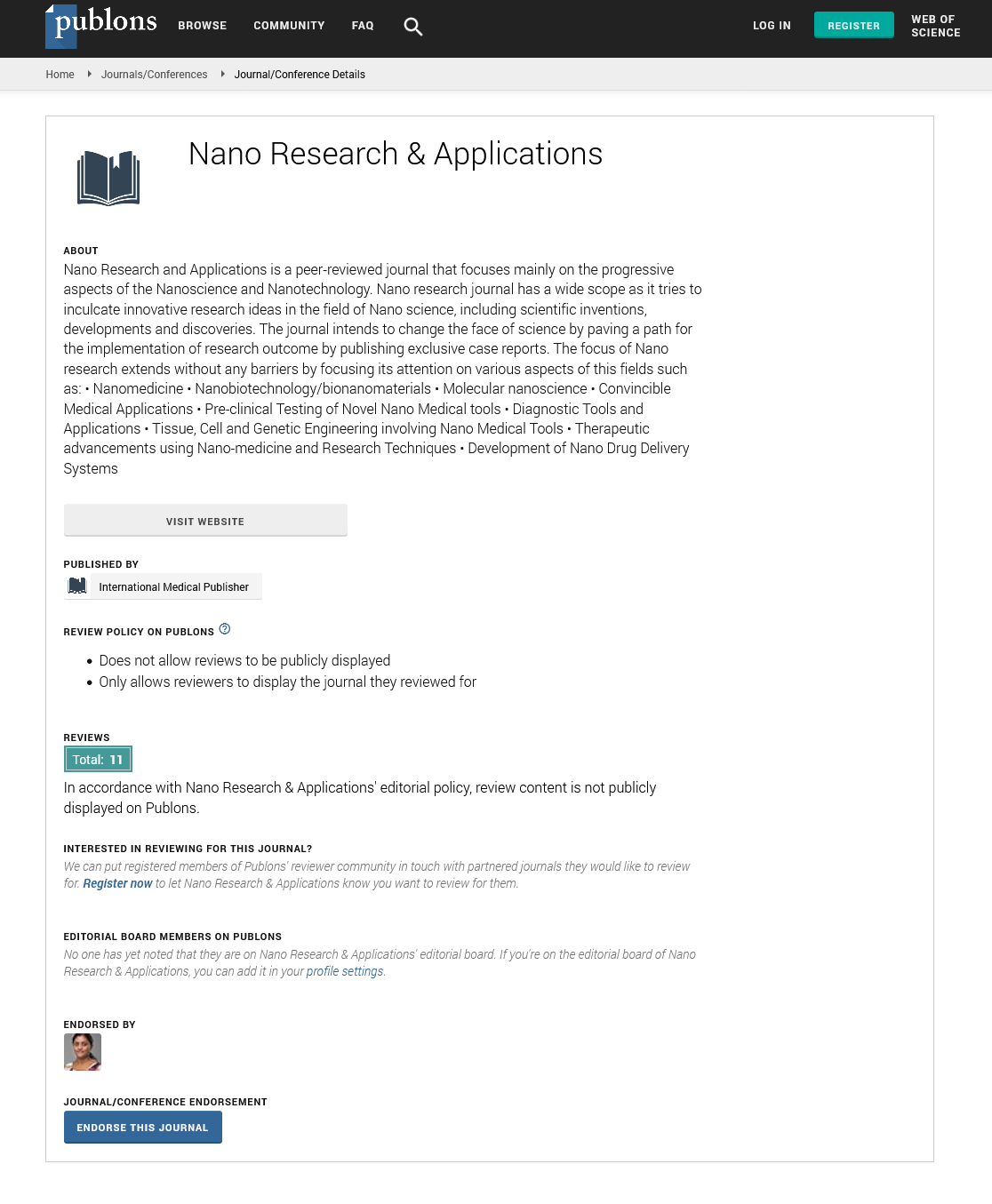ISSN : 2471-9838
Nano Research & Applications
Biosynthesis of copper nanoparticles by using Aloe barbadensis leaf extracts and study of application in Congo red (acid red 28) dye removal
Joint Event on 25th Nano Congress for Future Advancements & 12th Edition of International Conference on Nanopharmaceutics and Advanced Drug Delivery
August 16-18, 2018 | Dublin, Ireland
Madiha Batool, Zahidqureshi, Farwa Hashmi and Nida Mehboob
Government College University, Pakistan PGICC LHR, Pakistan
Posters & Accepted Abstracts: Nano Res Appl
DOI: 10.21767/2471-9838-C3-015
Abstract
Development of green nanotechnology is generating interest of researchers toward eco-friendly biosynthesis of nanoparticles. In this study, biosynthesis of stable copper nanoparticles was done using Aloe barbadensis leaf extract. First of all, we prepared leaf extract of Aloe barbadensis in deionized water. This extract added to 1 mmol of copper sulfate solution and observed the change in color of the solution from colorless to dark brown colored solution. The present study tracing of an object is a green synthesis of copper nanoparticles by the interaction of leaf extract and copper salt and its dye removal efficiency. Copper oxide nanoparticles in this study examined the efficient removal of Congo red CR dye. The effect of variables like concentration, time, PH, adsorbent dosage also examined in this present study. This was noted that maximum PH 3, the concentration of nanoparticles 1 mg, maximum time 120 minute was optimum condition for dye removal. Biosynthesis of nanoparticle put forward a cost-free and environmentally suitable method of nanoparticle synthesis. The characterization of copper oxide nanoparticles like X-ray diffraction and SEM analysis showed that average particle size calculated was 40 nm. The shape of the copper nanoparticles was spherical and cubic and their range of grain was 80-120 nm. EDX of synthesized nanoparticles showed copper 38%. UV spectrophotometer analysis confirms peak of the copper nanoparticles between 200- 600 nm.
Biography
E-mail:
tweetchem56@gmail.com
Google Scholar citation report
Citations : 387
Nano Research & Applications received 387 citations as per Google Scholar report
Nano Research & Applications peer review process verified at publons
Abstracted/Indexed in
- Google Scholar
- China National Knowledge Infrastructure (CNKI)
- Directory of Research Journal Indexing (DRJI)
- WorldCat
- Publons
- Secret Search Engine Labs
- Euro Pub
Open Access Journals
- Aquaculture & Veterinary Science
- Chemistry & Chemical Sciences
- Clinical Sciences
- Engineering
- General Science
- Genetics & Molecular Biology
- Health Care & Nursing
- Immunology & Microbiology
- Materials Science
- Mathematics & Physics
- Medical Sciences
- Neurology & Psychiatry
- Oncology & Cancer Science
- Pharmaceutical Sciences
